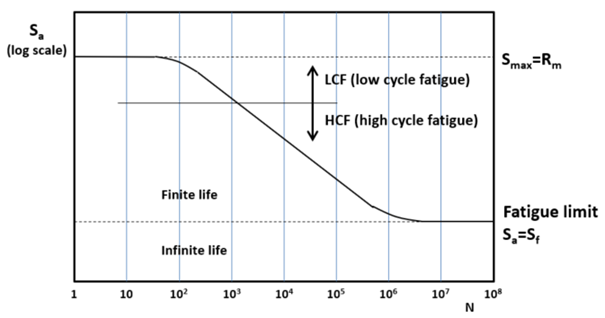-
What is the Difference between Low & High Cycle Fatigue?
-
The difference between Low Cycle Fatigue (LCF) and High Cycle Fatigue (HCF) has to do with the type of deformation. LCF is characterized by repeated plastic deformation (i.e. in each cycle), whereas HCF is characterized by elastic deformation.
Plastic deformation occurs due to nominal stresses exceeding the yield stress. HCF fatigue in contrast occurs due to locally high stresses arising by notches, whereby the nominal stress across the cross section is less than yield. As shown in the figure below the number of cycles to failure is thus low for LCF and high for HCF, hence the terms low and high cycle fatigue.
Transition between LCF and HCF is determined by the stress level, i.e. transition between plastic and elastic deformations. That implies that there is no fixed transition life, (for example 103 cycles), but that the transition life between LCF and HCF depends on the ductility of the material.

To learn more about fatigue please refer to our learning paths "Essentials of Metal Fatigue" and "Comprehensive Guide to Fatigue".
This blog was curated by Johannes Homan from Fatec Engineering.


